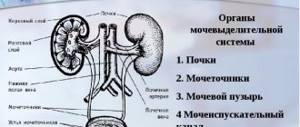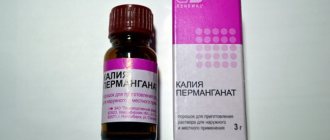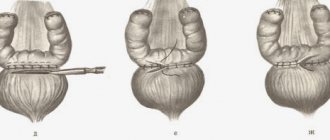Smear indicators and their interpretation
With the help of a smear you can make the correct diagnosis!
The results of the smear test may contain the following information:
- Leukocytes. A normal indicator is considered to be an amount not exceeding 5 units in the field of view. If the leukocyte level exceeds the permissible value, this indicates an infectious disease (urethritis, prostatitis)
- Red blood cells. The presence of red blood cells up to 3 units per field of view is normal. Red blood cells may be in the smear as a result of trauma to the urethra during the procedure. If their concentration in the smear is greatly increased, then this indicates an inflammatory or tumor process.
- Epithelial cells. Their concentration should not exceed 10 units. There may be more epithelial cells if there is an inflammatory process in the genitourinary system.
- Eosinophils. The concentration of such cells above normal is a symptom of allergic inflammation.
- Slime. A moderate amount of mucus is normal, but excessive mucus indicates an inflammatory process. Large amounts of mucus in combination with white blood cells indicate an acute infection.
- Cocchi. A small content of cocci in the smear is normal. This applies to staphylococci, streptococci, enterococci. They belong to opportunistic microflora and, under the influence of certain factors, contribute to the development of diseases.
If gonococci are present in the smear, then this is a clear sign of the development of gonorrhea. Also, the smear should be free of Trichomonas. The presence of pathogenic microorganisms in a scraping in a single quantity may indicate the beginning or completion of the inflammatory process, and a large number of them may indicate the acute course of the disease.
The following infectious diseases can be detected in a man’s smear:
- Ureaplasmosis
- Chlamydia
- Candidiasis
- Mycoplasmosis
- Trichomoniasis
- Leptothrixosis
Diagnosis of any pathology requires immediate treatment. Any disease can be cured if you follow all the doctor’s recommendations.
What does blood mean after a urethral smear in women?
Bleeding after examination is extremely rare.
But it is still possible.
Most often, two categories of women face this situation:
- Having active inflammation in the urethra. Sometimes even minor contact with the mucous membrane can cause bleeding.
- Emotionally labile patients who make sudden movements during the procedure. In such a situation, the doctor who needs to make a smear on the flora may not be forced to injure the urethral mucosa.
In any of these situations, the bleeding is very scanty, spotting, and lasts no more than 1-2 days.
If the discharge does not go away or is accompanied by pain or fever, you should immediately consult a doctor.
When is it necessary to take it?
Most sexually transmitted diseases in men occur in a latent form and do not manifest themselves in any way. However, over time, this can lead to prostatitis, chronic pain, impotence and infertility.
That is why it is important to undergo examinations with a urologist once a year, and if you are sexually active, regularly visit a dermatovenerologist. It is also necessary for the expectant father to carefully check his own health at the stage of pregnancy planning.
It is imperative to get tested for STIs if symptoms of sexually transmitted infections appear:
- Itching and burning in the groin area.
- Increased frequency and discomfort when urinating.
- Cloudiness of the urine, the appearance of blood, mucus, and pus in it.
- Unusual discharge from the urethra (smelly, foamy, mucous, purulent, drops of blood).
- Pain in the lower abdomen, discomfort during sexual intercourse, impotence.
- General weakness, lethargy, fever.
It is also necessary to suspect a sexually transmitted disease in the case of a combination of urethritis (inflammation of the urethra), conjunctivitis and joint pain.
Information content of the study
If the test results are not particularly reassuring, the patient is prescribed treatment. But even with good indicators, the complete absence of pathogenic microorganisms is not guaranteed. This is explained by the fact that not all types of microorganisms can be identified using a smear. The latter makes it possible to detect candida, gardenerella, trichomonas, gonococci, and sometimes chlamydia may be noted.
Biomaterial studies are carried out using a microscope. There remains a possibility that some microorganisms may go undetected.
We can conclude that a smear is one of the least informative, but also the simplest examinations of the urethra, which will help determine the presence and quantity of some pathogens. It will not require much time or financial expenditure, but will serve as a good aid to the urologist when prescribing treatment.
Where to take a urethral smear
Simple microscopy can be performed in any medical facility (public or private).
This analysis does not require highly qualified specialists and large financial costs.
But PCR examinations in government institutions are carried out strictly according to indications.
For example, in the protocol for examining pregnant women.
And there are not always reagents available for all infections.
Therefore, it is best to take a PCR test in one of the private paid laboratories.
Our medical center for dermatology and venereology uses only high-quality materials, modern equipment, and always has reagents for identifying any microorganism.
In addition, we have developed a unique painless method for collecting material from men.
When can you take a smear after antibiotics?
If you took antibiotics for the treatment of pathology of the ENT organs or for any other disease not related to the sexual sphere, then after finishing treatment you need to wait 2 weeks.
If you have previously been diagnosed with an STI and a course of antibiotics was aimed at treating this infection, then at least 40-45 days should pass from the end of therapy until treatment is monitored using a urethral smear.
Control of the collection of material from a smear from the urethra can be carried out 2-14 days after the end of treatment, depending on the type of therapy.
How to prepare for the test
Taking a smear does not require any special preparation, but there are general rules that must be followed:
- Abstain from sexual intercourse for 2-3 days;
- in the evening, before the morning procedure, take a shower; it is not recommended to do this in the morning;
- do not write a couple of hours before the test;
- It is not recommended to take any medications a week before sampling;
- Avoid drinking alcohol two days before the procedure.
These simple rules will help you get the most reliable results. You shouldn't neglect them.
After passing the smear, the patient is sent home. You do not need to follow any rules of conduct after the procedure. We continue to live a normal life. There may be discomfort and burning sensation for some time when trying to write in the penis - this is a side effect of the procedure.
Reviews
Vitaly, 37 years old. For a long time I didn’t dare to take this smear, but I got tired of the constant pain and nasty smell. I was very afraid of pain, but it turned out that I was in vain. It was unpleasant, of course, and I felt my urethra for several days afterwards. But they prescribed treatment, and now everything has gone away.
Andrey Viktorovich, 58 years old. I wouldn't want to go through this procedure again. I could barely stand it, and then I had to take analgesics. The diagnosis of prostatitis was confirmed, which is probably why it hurt so much. Now I need treatment.
Galina, 21 years old. I had a smear done as planned and Gardnerella was found, but in small quantities. The procedure itself is not painful and not scary, everything is done quickly, before you even notice. I inserted candles, then took a control test, everything came back to normal.
How to do a smear if you suspect an STD
If you suspect you have a sexually transmitted infection, we recommend taking the entire complex of 15 bacteria and their subspecies to accurately determine the microorganism that caused the disease.
Where and for what purpose do you get a smear test for HIV?
It is impossible to detect the immunodeficiency virus when taking a smear for microscopy.
But you can detect the RNA of the virus and determine its quantity using PCR.
This analysis can be done in large laboratories, including our medical center for dermatology and venereology.
Which doctor takes a urethral swab?
If you need a smear microscopy for genital infections, this test is usually performed by an obstetrician-gynecologist.
Moreover, a smear is taken from three places: the cervix, urethra and vaginal fornix.
If you suspect a urinary tract infection, you can consult a urologist.
In addition, a dermatovenerologist can also conduct an examination.
What infections is a PCR smear taken for?
Today, almost any known microorganism can be detected using PCR diagnostics.
If you don’t know where to get a smear in Moscow, our dermatovenerological dispensary offers PCR examination for more than 50 types of microorganisms.
If it is difficult for you to understand on your own how many bacteria need to be examined in your particular case, you can get advice from our specialists - an obstetrician-gynecologist or a dermatovenerologist.
You may be offered complex tests for 12, 15, 6, 8, 10 infections, where a smear is taken for bacteria of a certain group.
For example, complex 12 includes examination for: chlamydia, mycoplasma (2 subspecies), ureaplasma, gardnerella, trichomonas, gonococcus, candida, cytomegalovirus, papillomavirus (types 16 and 18) and herpes simplex virus.
There is also a complex of 6 intestinal infections: salmonella, 2 subspecies of E. coli, shigella, Yersinia pseudotuberculosis, OKI test.
If you need to have a smear test in Moscow inexpensively, you can choose specific infections for which you will be examined.
If you have been treated for a specific disease, you can also do an analysis only for this microorganism.
Pain when urinating
The patient may experience pain during the smear procedure. In some cases, pain may indicate the presence of an inflammatory process in the body.
In a healthy person, discomfort occurs less frequently. Severe pain occurs if already inflamed tissues have been disturbed.
Then, in addition to the chemical irritation of nerve cells caused by bacteria, physical irritation is added - from contact with a medical instrument.
However, in some cases, pain occurs in healthy people because the physician is not careful enough to collect the sample for analysis.
The mucous membranes of any person are very delicate. A fairly weak physical impact can damage them.
Various external influences on the urethra can lead to the formation of microcracks in the mucous membranes. Upon contact with urine, the wounds become irritated and the patient complains of pain.
Attacks of pain when urinating are usually sharp. Discomfort can last up to three days and gradually decrease over this period.
If the pain continues longer or its intensity increases, you should seek medical help.
In order for pain after a urethral smear to last less and have low intensity, certain recommendations should be followed.
It is advisable to perform the first urination immediately after the analysis procedure. Urine passes through the urethral ducts and helps heal microtraumas.
Some patients try to postpone the unpleasant process, but they should completely empty the bladder to more quickly normalize urination.
Women may experience slight bleeding from the urethra. Therefore, you should bring a panty liner to your doctor's appointment.
Sexual contact should be avoided for several days after the smear test. It is advisable to completely eliminate sexual arousal, as it causes a rush of blood to the pelvic organs and increased pain.
The less spicy and salty foods there are in the patient’s diet, the less irritating effect urine will have on the urethra.










